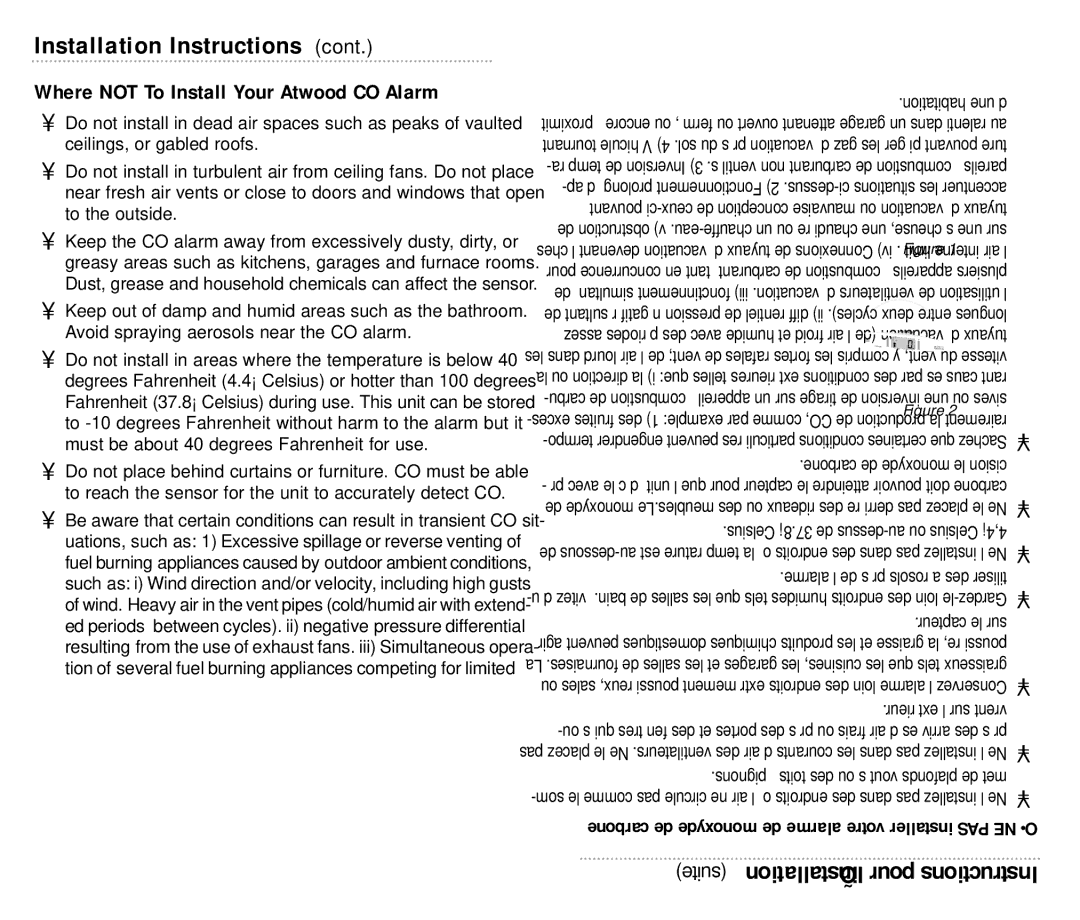KN-COPP-B specifications
The Atwood Mobile Products KN-COPP-B is a state-of-the-art carbon monoxide (CO) and propane gas detector designed specifically for recreational vehicles (RVs), campers, and other mobile environments. This device is essential for ensuring the safety of occupants by providing early warning signals when dangerous levels of carbon monoxide or propane gas are detected.One of the standout features of the KN-COPP-B is its dual-sensor technology. This innovative system combines the detection capabilities for both carbon monoxide and propane, allowing it to monitor air quality continuously and offer protection from two potentially life-threatening gases. The detector uses advanced electrochemical sensors for CO detection, which are known for their reliability and accuracy.
The KN-COPP-B is designed for easy installation. It comes with a compact, lightweight design that fits seamlessly into any RV or camper setup. The detector can be mounted easily on walls or ceilings and operates on 12V power, making it compatible with the electrical systems found in most mobile vehicles.
This device also boasts a user-friendly interface. It features an intuitive LED indicator that provides status updates at a glance. When CO or propane is detected, the alarm will emit a loud alert, ensuring that occupants are immediately aware of any dangerous conditions. Additionally, the device includes a test/reset button, allowing users to verify that the detector is operational.
Durability is another significant characteristic of the Atwood KN-COPP-B. It is designed to withstand the rigors of mobile life and perform reliably in various environmental conditions. Whether faced with temperature fluctuations or vibrations from traveling, this detector continues to operate effectively.
With safety as a top priority in recreational vehicle usage, the Atwood Mobile Products KN-COPP-B delivers peace of mind for travelers. It meets stringent safety standards and complies with both UL and CSA certifications, ensuring its efficacy and reliability.
In summary, the Atwood Mobile Products KN-COPP-B stands out for its dual-sensor technology, ease of installation, robust design, and clear user interface. By integrating advanced detection for carbon monoxide and propane, this detector significantly enhances safety for anyone enjoying the open road or the great outdoors, making it an essential device for RV owners and camping enthusiasts alike.

